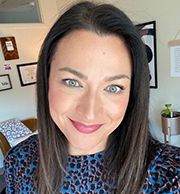
President's Letter: Start Small to Serve All
By Addy Wissel, Ph.D. | March 2023
 This month, we focus on “Serving the Spectrum of Special Needs.” To preface this conversation, it is important to remember that ASCA calls us to serve all students. All includes those who require something different because of their learning or behavioral needs. In considering this call, I am reminded of a visit with a site supervisor many years ago. As the supervisor and intern gave me a tour of the building and resources, we stopped outside a classroom when I asked, “What happens in this room?” The supervisor looked at the intern, the intern looked at me, and then the supervisor said, “I don’t go in there because those kids scare me.” She then told the intern that she could take me in that classroom “if she wanted.” The intern and I stepped inside, and we found ourselves in the middle of a classroom reserved for students with behavioral needs. The teacher and support staff in the room looked at us curiously (likely wondering why we were there) but eventually welcomed us into the space.
This month, we focus on “Serving the Spectrum of Special Needs.” To preface this conversation, it is important to remember that ASCA calls us to serve all students. All includes those who require something different because of their learning or behavioral needs. In considering this call, I am reminded of a visit with a site supervisor many years ago. As the supervisor and intern gave me a tour of the building and resources, we stopped outside a classroom when I asked, “What happens in this room?” The supervisor looked at the intern, the intern looked at me, and then the supervisor said, “I don’t go in there because those kids scare me.” She then told the intern that she could take me in that classroom “if she wanted.” The intern and I stepped inside, and we found ourselves in the middle of a classroom reserved for students with behavioral needs. The teacher and support staff in the room looked at us curiously (likely wondering why we were there) but eventually welcomed us into the space.I wonder what it would be like to not be a stranger in our special education classrooms. Prior to my work at the university, I served as both a school counselor and a school psychologist in the K-12 system. This dual lens afforded me the opportunity to support a wide range of students, teachers and families. I was a frequent visitor to the special education classrooms and the teachers and support staff were important partners in my work. This trusting relationship took intentionality and effort, especially in the beginning. Our colleagues in these spaces (and their students) often feel like they are on an island. I know special educators who have been asked by general educators if they are “real teachers.”
Both cases suffered from a lack of understanding, but school counselors can use their skills and position to model a different way. Before you begin to wonder how you might squeeze this into your full day, I invite you to start small. Think, “What is one thing I can do this week to support our special education students and educators?”
Here are a few ideas:
- Visit one special educator per week and get to know them as a human; get curious about their work and skill set.
- Observe a special education classroom and watch these educators skillfully support a variety of learning needs in one setting.
- Ask them “What can I do to help you?” and initiate collaboration using “I notice that…” language to work together on a student’s needs.
- Offer to develop skills and provide classroom lessons to their students (especially if they are in self-contained rooms).
- Smile and greet special educators and their students by name.
ASCA calls us to serve all students, to demonstrate leadership and to advocate for the needs and rights of our communities. I invite you to join in this effort!
Contact Addy Wissel, Ph.D., WSCA president, at addywisselwsca@gmail.com.